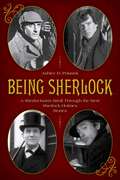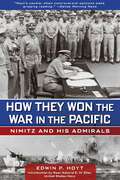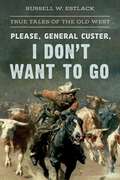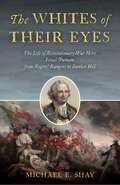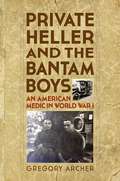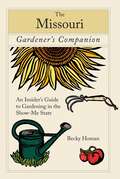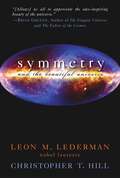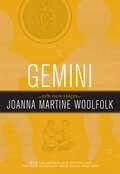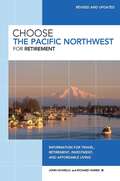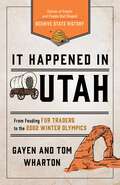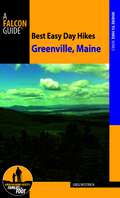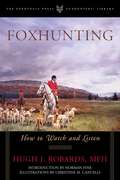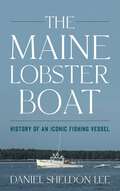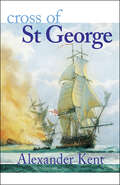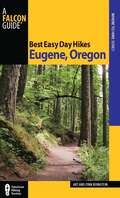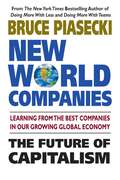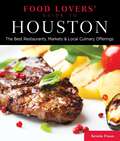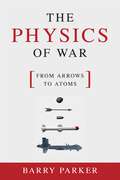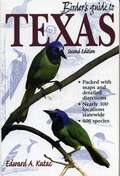- Table View
- List View
Being Sherlock: A Sherlockian's Stroll Through the Best Sherlock Holmes Stories
by Ashley D. PolasekBeing Sherlock shares the best collection of Sherlock Holmes stories fans have never had, until now. Shared by Sherlockian Ashley D. Polasek, she nimbly sets the stage for each story and shares interesting Sherlockian tidbits about the incredible evolution of this iconic character. Famous former and current Sherlocks include: William Gillette, Basil Rathbone, Christopher Lee, John Cleese, Robert Downey Jr., Sir Ian McKellen, and Benedict Cumberbatch among others. Featuring lesser-known photography and behind the scene shots, this book is for every Sherlock Holmes fan bookshelf. Unlike other Sherlockian guides, this book attempts to answer why the Sherlock narrative is so popular and decree the best and worst representations.
How They Won the War in the Pacific: Nimitz and His Admirals
by Edwin P. Hoyt Rear Admiral EllerThis meticulous study is a concentrated look at naval admiral Chester W. Nimitz and his subordinate leaders—military men under stress—and the relationship of fighting admirals to their top leaders and one another. Bull Halsey, &“the Patton of the Pacific,&” could win a battle; ascetic and cultivated Raymond Spruance could win a campaign; but Chester W. Nimitz, the quiet but dauntless battler from the banks of the Pedernales River, could win a war. And the way he did win that war in the Pacific is the center of this excellent and absorbing biography of naval operations and of men in command relationships.How They Won the War in the Pacific covers many leaders, including the top fighting ones afloat and ashore, and it shows Admiral Nimitz as history will record him—as the wise, calm tower of strength in adversity and success, the principal architect of victory in the Pacific during World War II.
Please, General Custer, I Don't Want to Go: True Tales of the Old West
by Russell W. EstlackThese entertaining stories from Old West history include cowboys, Indians, lawmen, lawbreakers, entertainers, prostitutes, priests, and politicians. They all helped shape the myth and legend of the American West. This book reveals the stories of characters like Mary Fields, Cleophas Dowd, and Judge Roy Bean, and offers glimpses of gunfights, holdups, mining claim battles, and more.
Whites of Their Eyes: The Life of Revolutionary War Hero Israel Putnam from Rogers' Rangers to Bunker Hill
by Michael E. ShayDon&’t fire until you see the whites of their eyes&” remains one of the enduring, and most stirring, quotations of the Revolutionary War, and it was very likely uttered at the Battle of Bunker Hill by General Israel Putnam. Despite this, and Putnam&’s renown as a battlefield commander and his colorful military service far and wide, Putnam has never received his due from modern historians. In The Whites of Their Eyes, Michael E. Shay tells the exciting life of Israel Putnam.Born near Salem, Massachusetts, in 1718, Putnam relocated in 1740 to northeastern Connecticut, where he was a slaveowner and, according to folk legend, killed Connecticut&’s last wolf, in a cave known as Israel Putnam Wolf Den, which is on the U.S. National Register of Historic Places. During the French and Indian War, Putnam enlisted as a private and rose to the rank of colonel. He served with Robert Rogers, famous Ranger founder and leader, and a popular phrase of the time said, &“Rogers always sent, but Putnam led his men to action.&” In 1759, Putnam led an assault on French Fort Carillon (later Ticonderoga); in 1760, he marched against Montreal; in 1762, he survived a shipwreck and yellow fever during an expedition against Cuba; and in 1763, he was sent to defend Detroit during Pontiac&’s rebellion.When the Revolutionary War broke out, Putnam—who had been radicalized by the Stamp Act—was among those immediately considered for high command. Named one of the Continental Army&’s first four major generals, he helped plan and lead at the Battle of Bunker Hill, where he gave the order about &“the whites of their eyes&” and argued in favor of fortifying Breed&’s Hill, in addition to Bunker Hill. Most of the battle would take place on Breed&’s. During the battles for Manhattan, Brooklyn, and Long Island during the summer of 1776, Putnam proved himself a capable and courageous battlefield commander with a special eye for fortifications, but he sometimes faltered in tactical and strategic decision-making. In the fall of 1777, the British outmanned Putnam, resulting in the loss of several key forts in the Hudson Highlands near West Point. Putnam was exonerated by a court of inquiry, but—nearly sixty and opposed by powerful political elements from New York, including Alexander Hamilton—he spent many of the following months recruiting in Connecticut. In December 1779 he was returning to Washington&’s Army to rejoin his division when he suffered a stroke and was paralyzed.The Whites of Their Eyes recounts the life and times of Israel Putnam, a larger-than-life general, a gregarious tavern keeper and farmer, who was a folk hero in Connecticut and the probable source of legendary words during the Revolutionary War—and whose exploits make him one of the most interesting officers in American military history.
Insiders' Guide® to Massachusetts (Insiders' Guide Series)
by Maria OliaInsiders' Guide to Massachusetts is the essential source for in-depth travel information for visitors and locals to the Bay State. Written by a local, and true insider, Insiders' Guide to Massachusetts offers a personal and practical perspective of the state that makes it a must-have guide for travelers as well as residents looking to rediscover their home state.
Private Heller and the Bantam Boys: An American Medic in World War I
by Gregory ArcherIn time for the 100th anniversary of America&’s entry into the First World War, Private Heller and the Bantam Boys—based on Heller&’s long-hidden diary—tells the tale of a group of privileged yet naïve Princeton University students and their big, brawny Midwestern farm boy interloper, Ralph Heller. To them, war is a grand adventure not to be missed, and they enlist as medics and ambulance drivers (think Hemingway and dos Passos) to make sure they can get to France before the war ends. These college boys go about their training filled with idealism and bravado and, despite constant marching and drilling, absolutely no preparation for what they&’re about to face.When their transport ship comes under U-boat attack off the Welsh coast, the idea that they could get killed before they reach the front begins to sink in. Once in France, and with a seemingly unlimited supply of red wine (water is for crops and animals), and hormone-fueled high spirits, the Bantam Boys are ready for anything that comes their way. Or so they think.Devastation touches all, as they enter a hell of mud, rats, poison gas, flying lead, and rotting corpses where they&’re just as likely in the confusion of No Man&’s Land to end up heading toward the Germans rather than away from them. From the comic to the horrific, Private Heller and the Bantam Boys will touch readers of all ages.
Missouri Gardener's Companion: An Insider's Guide To Gardening In The Show-Me State (Gardening Series)
by Becky HomanMaster gardener Becky Homan explains in clear, user-friendly terms the different gardening conditions in each part of Missouri, so readers can identify which of the widely varying soils, temperature zones, and precipitation levels they are dealing with. These detailed regional descriptions make this book a standout. Gardeners and horticulturists from across the Show Me State contribute hands-on advice for each region, from when to start plants from seed to when to water in drought or where to get soil samples analyzed. This is the must-have garden bible for Missouri residents.
Everything You Need to Know About Building the Custom Home: How to Be Your Own General Contractor
by John FoldsThis book helps the reader save a great deal of money by demonstrating how to manage the project and act as one's own contractor.
Symmetry and the Beautiful Universe
by Christopher T. Hill Leon M. LedermanWhen scientists peer through a telescope at the distant stars in outer space or use a particle-accelerator to analyze the smallest components of matter, they discover that the same laws of physics govern the whole universe at all times and all places. Physicists call the eternal, ubiquitous constancy of the laws of physics symmetry. Symmetry is the basic underlying principle that defines the laws of nature and hence controls the universe. This all-important insight is one of the great conceptual breakthroughs in modern physics and is the basis of contemporary efforts to discover a grand unified theory to explain all the laws of physics. Nobel Laureate Leon M. Lederman and physicist Christopher T. Hill explain the supremely elegant concept of symmetry and all its profound ramifications to life on Earth and the universe at large in this eloquent, accessible popular science book. They not only clearly describe concepts normally reserved only for physicists and mathematicians, but they also instill an appreciation for the profound beauty of the universe's inherent design. Central to the story of symmetry is an obscure, unpretentious, but extremely gifted German mathematician named Emmy Noether. Though still little known to the world, she impressed no less a scientist than Albert Einstein, who praised her "penetrating mathematical thinking." In some of her earliest work she proved that the law of the conservation of energy was connected to the idea of symmetry and thus laid the mathematical groundwork for what may be the most important concept of modern physics. Lederman and Hill reveal concepts about the universe, based on Noether's work, that are largely unknown to the public and have wide-reaching implications in connection with the Big Bang, Einstein's theory of relativity, quantum mechanics, and many other areas of physics. Through ingenious analogies and illustrations, they bring these astounding notions to life. This book will open your eyes to a universe you never knew existed.
Natural Beauty Basics
by Dorie ByersEvery day, television and magazine ads tell us that beautiful skin and hair are available only through the use of expensive brand-name products. But the fact is that you can attain a radiant, healthy appearance by using products made inexpensively at home. That&’s what Natural Beauty Basics is all about. First, author Dorie Byers guides you to the equipment and ingredients you&’ll need to make your own products. She then presents easy-to-follow recipes for over 150 hand creams, body powders, shampoos, soaps, and more—products that are effective, all-natural, and allergen-free.You don&’t have to spend a lot of money to get the best possible care for your hair, skin, and nails. Whether you enjoy making your own beauty products at home, you are in search of products that are allergen- and chemical-free, or you simply love to pamper yourself, your first stop should be Natural Beauty Basics.
Gemini: Sun Sign Series
by Joanna Martine WoolfolkYour Sun sign (often referred to simply as your sign) is the zodiac sign the Sun was traveling through at the time of your birth. Your Sun sign is the most important and pervasive influence in your horoscope and in many ways determines how others see you. It governs your individuality, your distinctive style, and your drive to fulfill your goals. It symbolizes the role you are given to play in this life. It&’s as if at the moment of your birth you were pushed onstage into a drama called This Is My Life. In this drama, you are the starring actor—and your sign is the character you play.This elegant little volume is packed with what your Sun sign tells you about you. You&’ll read about your many positive qualities as well as your negative issues and inclinations. You&’ll find insights into your power, potentials, and pitfalls; advice about relationships, love, and sex; clarification on erogenous zones and how you combine romantically with other signs; guidance regarding career, health, and diet; and information about myriads of objects, places, concepts, and things to which you&’re attached. You&’ll also find topics not usually included in other astrology books—such as how you fit in with Chinese astrology and with numerology.
Choose the Pacific Northwest for Retirement: Information for Travel, Retirement, Investment, and Affordable Living (Choose Retirement Series)
by John Howells Richard HarrisThis is the comprehensive guide to have if considering retirement in the Pacific Northwest. From real estate to weather statistics, this guide will empower you to help you make such an important life decision.
It Happened in Utah: Stories of Events and People that Shaped Beehive State History (It Happened In Series)
by Tom WhartonFrom the U.S. Army&’s bloodless &“invasion&” of Salt Lake City to the humble beginnings of the Sundance Film Festival, It Happened in Utah looks at intriguing people and episodes from the history of the Beehive State.Read about Jean Baptiste, an exiled grave robber whose mysterious disappearance from a remote island in Great Salt Lake remains unsolved. Relive the life-shattering upheaval suffered by Japanese Americans during their banishment to remote U.S. internment camps during World War II. And discover how two boys on the hunt for a bit of fun killed five people—including themselves—caused untold property damage, and left a large crater in the earth.
Best Easy Day Hikes Greenville, Maine (Best Easy Day Hikes Series)
by Greg WestrichFeaturing a range of hikes covering the coastal and inland areas within an hour's drive of Greenville, Best Easy Day Hikes Greenville is an essential hiking companion. Whether you prefer long or short hikes, populated areas or quiet woods, you&’ll have plenty of options, including several lesser-known hikes. Each hike includes concise descriptions, GPS coordinates, and detailed maps.Look inside for: Casual hikes to full-day adventuresHikes for everyone, including familiesMile-by-mile directions and clear trail mapsTrail Finder to choose the best hikes for what you needGPS coordinates
Foxhunting: How to Watch and Listen
by Hugh J. RobardsInternationally renowned Master and huntsman Hugh J. Robards, MFH engagingly informs foxhunters, new or experienced, how to more fully absorb the drama of the hunt. What is the huntsman doing? Why does he do that? What about the whippers-in? The Field Master? The hounds? The fox? What problems do each encounter in the field during the course of a typical hunt? What decisions must they make? It may be a revelation to some, especially those who hunt to ride, but even while standing still, things are happening if you know what to look for and how to interpret what you see. By learning what to watch and listen for, field members can increase their awareness and thus their enjoyment of every hunting day.
Maine Lobster Boat: History of an Iconic Fishing Vessel
by Daniel Sheldon LeeThe modern lobster boat has evolved slowly over decades to become the craft it is today: seaworthy, strong, fast, and trusted implicitly by the lobstermen and women to get the job done and get them home, each and every time, through the most terrifying--and sometimes life-threatening--conditions that the sea can dish up. &“Where do lobster boats come from?&” &“What is the origin of their design?&” &“Who builds them?&” &“How do they work?&” The story of the Maine lobster boat needs to be told--before the storied history of this iconic American craft slips away forever into the past, on the heels of what may be the last surviving traditional lobster boat builders.Filled with colorful characters, old maritime tales, and fascinating details, this a definitive look at the origins and lore of Maine's most ubiquitous vessel.
Cross of St George
by Alexander KentFebruary 1813: As American privateers pick off British and Canadian ships in the wake of the War of 1812, Admiral Sir Richard Bolitho returns to Halifax to defend Crown property. In the cold waters off Nova Scotia, he fights fruitless skirmishes with men of the frontier, all the while longing for peace.
Best Easy Day Hikes Eugene, Oregon (Best Easy Day Hikes Series)
by Art Bernstein Lynn BernsteinBest Easy Day Hikes Eugene, OR includes concise descriptions of the best short hikes in the area, with detailed maps of the routes. The 20 hikes in this guide are generally short, easy to follow, and guaranteed to please.
How to Die in the Outdoors: From Bad Bears to Toxic Toads, 110 Grisly Ways to Croak
by Buck TiltonBy living a normal, boring life like most people do, one has an excellent chance of becoming yet another statistic on the proverbial list of the leading causes of death. Of course, the process can be accelerated a bit by eating lots of fat, giving up exercise, smoking, drinking heavily (not water), and worrying. Buck Tilton prefers to ponder the alternatives. In How to Die in the Outdoors, he presents us with 110 far more interesting and unique ways to perish: snake bite, elephant foot, walrus tusk, rhino horn, and many, many more. In a straightforward style laced with his trademark wit, and presented in easy to understand terms, Tilton describes not only the details of how one can die, some intriguingly gory and all based—more or less—on facts, but also the ways to avoid death should life-threatening situations arise in which one is not ready to check out of this world and into whatever afterlife there may be.
New World Companies
by Bruce PiaseckiWhat makes a global company great? Forthe past few decades, more than 60 percent of Fortune 500 companies have eitherfailed or been significantly downgraded in size, influence, or governancestructures. In New World Companies, best-selling author and corporateconsultant Bruce Piasecki examines this sobering reality and explains whycertain twenty-first century companies are likely to thrive while others fallshort.New World Companiesbegins withan overview of today's global business environment. Specifically, it examinesthe recently evolved areas of corporate concern: environmental, social, andgovernance (ESG) practices. It then shows how this growing trend toward socialresponsiveness—involving areas such as preservation of the environment, themeeting of consumer and employee needs, and the transparency of companypractices and philosophies—is proving to be an integral part of a successfuloperation. Subsequent chapters explore the role of digital technology inbringing the people of the world together in a new era of human rights; theevolution of shared values in business networks; the new flow of moneymanagement and successful investing; the importance of innovation andsustainability; and much more.Whether you are an investor, anexecutive, or a consumer, New World Companies providesyou with the tools needed to measure a company's potential for growth andsuccess—or its likelihood of failure.
Successful Shotgun Shooting
by Andrew MontagueWhile much has changed in the world of shotgun shooting—from new gun models to new ammunition—certain fundamentals have stayed the same. Successful Shotgun Shooting, originally published in 1971, remains one of the most thorough and clear primers on the art and science of shooting the shotgun. Thoroughly illustrated and concisely written, Montague's book will make a better shooter of anyone, whether a first time shooter or a seasoned owner of a $40,000 over and under, who takes the time to read through his advice.
Food Lovers' Guide to® Houston: The Best Restaurants, Markets & Local Culinary Offerings (Food Lovers' Series)
by Kristin FinanTexas tradition mingles with an international melting pot of cuisines in Houston to create a foodie destination like no other. From Tex-Mex and barbecue to seasonal menus and high-profile eateries, the city’s culinary scene offers delicious dishes certain to please anyone’s palate. In Food Lovers’ Guide to Houston, seasoned food writer Kristin Finan shares the inside scoop on the best places to find, enjoy, and celebrate these culinary treasures. A bounty of mouthwatering delights awaits you in this engagingly written guide.With delectable recipes from the renowned kitchens of the city’s iconic eateries, diners, and elegant dining rooms, Food Lovers’ Guide to Houston is the ultimate resource for food lovers to use and savor. Inside You'll Find:• Favorite restaurants and landmark eateries • Specialty food stores and markets• Farmers’ markets and farm stands • Food festivals and culinary events• Recipes from top Houston chefs • The city’s best cafes, taverns, and wine bars• The metro area’s best craft breweries, wineries, and wine shops• Local food lore and kitchen wisdom
Death Valley Trivia
by Don LagoThe most incredible, unbelievable, wild, weird, fun, fascinating, and true facts about Death Valley National Park.Death Valley National Park is full of wonder - and so is this book. Here you will find the biggest and smallest, longest and shortest, first and last, weirdest and wildest, and the who, what, and where of Death Valley. From Telescope Peak to Badwater Basin and everything in between, Death Valley Trivia offers something fascinating, fun, and little known about the area's landscapes, geology, plants, wildlife, weather, explorers, prospectors, outlaws, celebrities - and more.Carry it on a hike, read it in your car, and take it home to enjoy again and again. Play a Death Valley trivia game with family and friends! These trivial trifles, treasures, and treats will keep you laughing, learning, and guessing. It's fun-tastic!
Physics of War: From Arrows to Atoms
by Barry ParkerThis fascinating blend of popular science and military history examines the science of war, demonstrating the close connection between the discovery of basic physical principles and the development of weaponry over the ages. Physics has played a critical role in warfare since the earliest times. Barry Parker highlights famous battles of the past as well as renowned scientists and inventors such as Leonardo, Galileo, Newton, Maxwell, and Einstein whose work had an impact on the technology of combat. Mechanics and the laws of motion led to improved shell trajectories; gas dynamics proved important to the interior ballistics of rifles and cannons; and space exploration resulted in intercontinental missiles, spy satellites, and drone aircraft. Parker emphasizes the special discoveries that had revolutionary effects on the art of warfare: the Chinese invention of gunpowder, the development of firearms, the impact of the Industrial Revolution, the deployment of the airplane in the First World War, and in our era the unleashing of the enormous power inherent in nuclear fission and fusion.
Birder's Guide to Texas
by Edward A. KutacFor Texas residents and visitors alike, this book is your best guide to the outstanding birding opportunities in the Lone Star State. It reveals where you can find resident, migrant, and rare birds. Explicit driving directions, maps, checklists, and detailed descriptions of hot birding sites make this book the perfect guide for nature lovers, casual bird observers, Life List compilers, and dedicated ornithologists.
